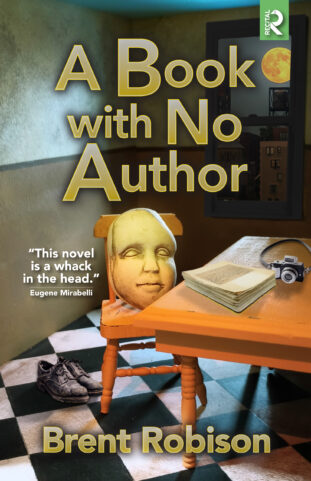A week ago as I introduced the story I read at my booksigning at the Center for Photography at Woodstock, there were several things I meant to say but didn't. Things that simply left my head the instant I stepped to the microphone. Hmm... by now I should have learned to make notes.
One of those things was that I love the blurry boundary between fact and fiction. I chose to read at CPW because in my story "Signs" I set an important scene there and had conjured up two fictional bodies of photographic work to fill the gallery walls. It was a real place, but filled with imaginary art and imaginary people, like a parallel universe -- almost ours but just a bit different. As I read, it was as if apparitions from the story floated half-visible in the room with us.
In another story in my collection, "A Confession of Love and Emptiness," the narrator (a total fiction) faces the legacy of being related to (the real person) Peter Roget, of Thesaurus fame. And he watches as his father's demolition company (entirely imaginary) tears down a neighborhood to make way for Lincoln Center in New York City (truth) -- the very block that was the (actual) childhood home of Thelonious Monk. He goes on to say:
Ten years later, Alice and I sat in the Metropolitan Opera in Lincoln Center, watching LaBoheme, Rodolfo singing to Mimi that her beauty is like the sunrise, and Mimi, dying, crying back, no, like a sunset, and Alice was in tears, but I was seeing all around us the faint outlines of buildings, brownstones with light in the windows, and through the shimmering walls I could see the rows of finely dressed New Yorkers in a grand golden hall. It was like those Kirlian photographs I’ve seen since, where the image of a leaf is whole, unharmed, although its tip had been torn off before the photo was made, and I thought: build and destroy, build and destroy, that is the way of the universe, the way of God. All things built, once destroyed, leave their imprint forever, ghost shapes that linger in the gaps, made of quarks and neutrinos and photons, everywhere, like the memory of water that hides in ice, like the possibility of ice that hides in water.
The ghostly side-by-side existence of multiple realities -- fiction/fact, past/present -- is more than just a writerly game that's fun to play. For me, it's a metaphoric description of actuality.
It works on more than one level. Quantum physics and string theory provide the foundation for simultaneous time, distanceless space, and an infinite number of parallel universes. Ancient wisdom traditions like Advaita (literally, "not two") tell us that what we see as reality is all an illusion: "Maya." A fiction. Our lives, our individual selves, the multitude of separate things we see around us -- all just ego-manufactured stories masking the Unity, the "ultimate indivisibility," that is the world's true nature.
Borges was writing something true when he described the infinite maze of possibilities in his story "The Garden of Forking Paths." Literary fiction holds a mirror up to the larger fiction of the world, and gives us a way to see past the details of our lives toward a larger context. That experience can be even richer when we consciously layer the "imaginary" over the "real," and that slippery juxtaposition presents us with the suddenly beautiful face of Mystery.
Friday, November 20, 2009
It's All a Fiction
Subscribe to:
Post Comments (Atom)





This post makes my week. In all probability, this post and this blog don't exist outside my imagination. But I needed to believe that I'm not the only one who loves the space where worlds and times and realities overlap into an addictive blur, the littoral between the high and low tides of adjoining universes.
ReplyDeleteWhat a wonderful place to do a reading, to see one illusion merging with another.
Malcolm
Thanks Malcolm -- feels good to know we think alike!
ReplyDeleteAlso thanks for making me look up "littoral". Great word.
BTW, Campbell is my maternal grandmother's maiden name. We're probably related :-)
Best to you...